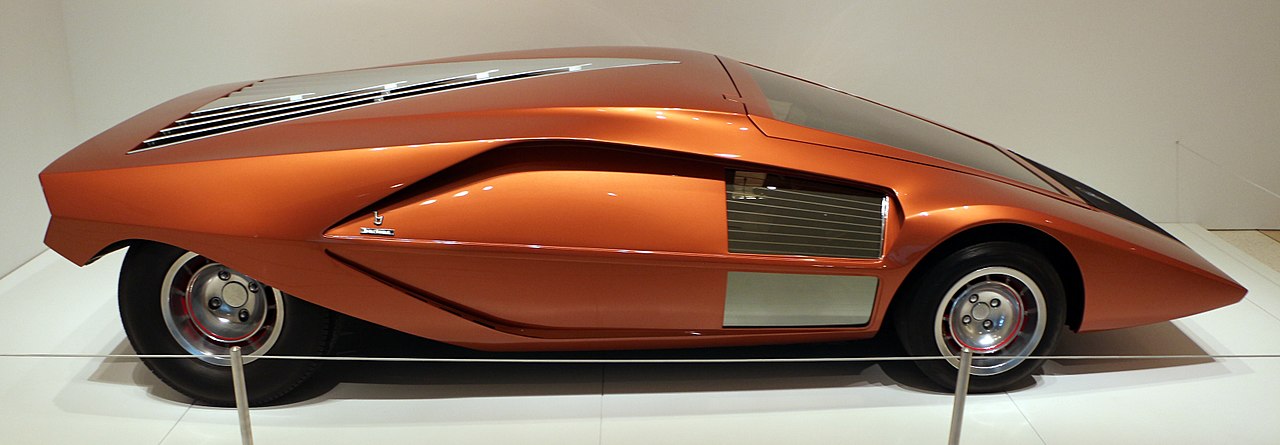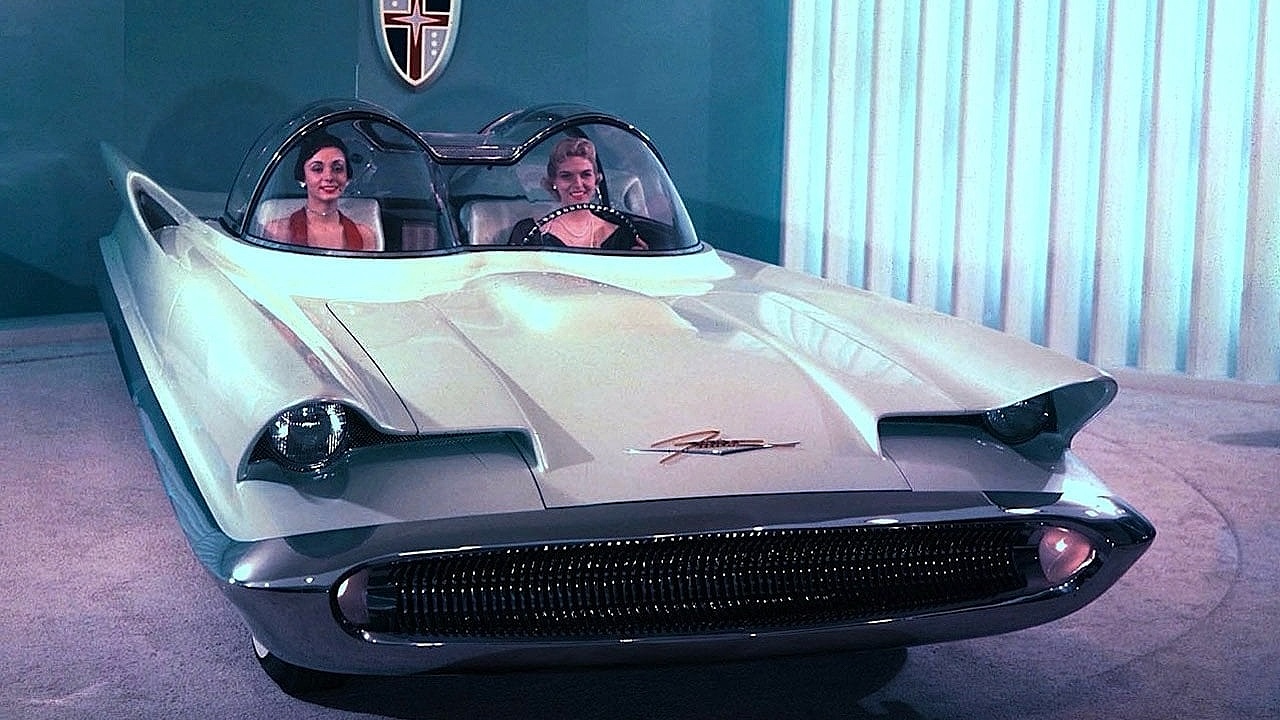In the automotive industry, concept cars are like the playground of imagination, where designers and manufacturers get to flex their creative muscles and push the boundaries of innovation. These concept cars, often presented at auto shows, are explorations of design, technology, and potential future trends.
However, not every concept car is a winner. Some are so quirky, impractical, or just plain bizarre that they end up serving as a lesson in what not to do. In this post, we’ll have a look at some concept cars that prove not every idea should hit the road.
BMW Gina Light Visionary Model

The BMW Gina Light Visionary Model, unveiled in 2008, was certainly a bold departure from typical car design. The “skin” of the car was made from a fabric material that could stretch and shift, supposedly making the car more aerodynamic.
While this was an interesting concept, it raised a lot of questions. Firstly, how would the fabric hold up in a crash? And secondly, how would it handle the elements, like rain, snow, or even bird droppings? The Gina Light Visionary Model was certainly a unique idea, but it’s easy to see why this concept car never made it into production.
Ford Nucleon

In 1958, at the height of the atomic age, Ford theorized the use of nuclear power for cars, resulting in the Ford Nucleon concept. The idea was to use a small nuclear reactor in the car, which would only need refuelling every 5,000 miles.
However, the practicality of this idea was questionable at best. A car accident could potentially result in a nuclear disaster. Additionally, the weight and size of the required shielding would make the car impractical. In hindsight, the Ford Nucleon serves as a reminder that not all futuristic ideas are feasible or safe.
General Motors Firebird III

The GM Firebird III, unveiled in 1958, was a concept car that was designed to look like a jet fighter, complete with a bubble-top canopy and seven wings and fins. The car was also filled with futuristic features, like an automatic guidance system for “hands-free” driving.
While the design was certainly eye-catching, it was also wildly impractical. The multiple wings and fins would have created a lot of unnecessary drag, reducing the car’s efficiency. Plus, the bubble-top canopy might have made for a nice view, but it would have also turned the car into a greenhouse in sunny weather. The Firebird III was a great example of form over function, but not a model for successful car design.
Peugeot Moovie

The Peugeot Moovie, a concept car from 2005, was designed by a 23-year-old student for a Peugeot design competition. The car was incredibly compact, with the wheels almost completely enclosed by the body of the car.
While the Moovie may have been compact and efficient, it was also extremely impractical. The enclosed wheels would make it difficult to replace a flat tire, and the small size of the car would make it unsafe in a collision with a larger vehicle. The Moovie may have been an interesting concept, but it was not a practical design for a real car.
Lamborghini Egoista

The Lamborghini Egoista, unveiled in 2013, was designed to celebrate Lamborghini’s 50th anniversary. The car was designed for one person only, with a cockpit inspired by jet fighters.
While the Egoista certainly embodied Lamborghini’s spirit of extravagance, the single-seater design was incredibly impractical. A car that can only carry one person is not a practical vehicle for most people. Plus, the cockpit design would make it difficult to get in and out of the car. The Egoista may have been a fitting celebration of Lamborghini’s history, but it was not a realistic design for a production car.
Nissan Pivo 2

The Nissan Pivo 2, unveiled in 2007, was a concept car with a cabin that could rotate 360 degrees, eliminating the need for reverse driving.
While this was an innovative idea, it was also impractical. The rotating cabin would add a lot of complexity to the car’s design, making it more prone to mechanical problems. Plus, reverse driving is not really a major issue for most drivers, so the Pivo 2 was solving a problem that didn’t really exist. The Pivo 2 was a creative concept, but not a practical one.
Buick Centurion

In 1956, the Buick Centurion concept car was unveiled with an unusual feature: a rear-view camera. While this is now a common feature in many cars, it was revolutionary at the time.
However, the Centurion had a major design flaw: it didn’t have any rear-view mirrors. Instead, it relied solely on the camera. This would have been a major safety issue if the camera failed. While the Centurion was ahead of its time in some ways, it was also a reminder that new technology should complement, not replace, proven safety features.
Toyota FV2

The Toyota FV2, unveiled in 2013, was a concept car that was designed to be controlled by the driver’s body movements, rather than a steering wheel.
While this was an interesting idea, it was also incredibly impractical. Controlling a car with body movements would require a lot of physical effort and could potentially be dangerous if the driver made a sudden movement. Plus, it would be difficult for people with physical disabilities to use. The FV2 was a bold concept, but not a practical one.
Lancia (Bertone) Stratos HF Zero

The Lancia (Bertone) Stratos HF Zero, unveiled in 1970, was a concept car with an incredibly low profile, standing at just 33 inches tall.
While this made the car look sleek and futuristic, it was also incredibly impractical. The low profile would make it difficult to get in and out of the car, and the car would be difficult to see from a larger vehicle. Plus, the car would be impossible to drive over speed bumps or on uneven surfaces. The Stratos HF Zero was a striking concept, but not a practical one.
BMW Lovos

The BMW Lovos, unveiled in 2009, was a concept car with an unusual feature: the entire exterior of the car was covered in small, scale-like pieces that could open and close.
While this was a unique design, it was also impractical. The scales would add a lot of weight and complexity to the car, and it’s unclear what benefit they would provide. Plus, the scales could potentially be a hazard if they opened while the car was moving at high speed. The Lovos was an interesting concept, but not a practical one.
Mercedes-Benz F 015

The Mercedes-Benz F 015, unveiled in 2015, was a concept car designed for a future where cars are fully autonomous. The car had a luxurious interior that was more like a lounge than a typical car interior, with rotating chairs that allowed passengers to face each other.
While the F 015 was a bold vision of the future, it was also impractical for the present day. The rotating chairs would be a safety issue in a crash, and the luxurious interior would be impractical for a family with young children. Plus, fully autonomous cars are still years away from being a reality. The F 015 was a futuristic concept, but not a practical one.

